A Rollercoaster of Emotional Engagement
With just a few hours to go in what might come down as one of the tightest races for the US Presidential Election, we look back at some of the highlights of the campaign. Over the course of the 2024 campaign, we’ve focused on measuring the emotional impact and audience engagement with key political events to understand how different campaign moments resonated amongst diverse voter demographics. We did this by capturing the emotional responses of voters as they were exposed to political content and messaging. Our methodology, using biometrics through GSR (galvanic skin response) at scale, allowed us to monitor the reactions of our US panel on a second-by-second basis and understand exactly what was engaging (or not) each audience segment. For example, our recent examination of the Second US Presidential Debate highlighted how candidates’ performances impacted viewer sentiment and engagement across political affiliations.
The insights derived from Trump’s Minnesota Speech and the Republican National Convention (RNC) build on this foundation, allowing us to map how a single event can evoke diverse emotional responses among different political groups. By connecting these findings to our broader election coverage, we can better understand the evolving dynamics of voter sentiment as we approach election day.
Donald Trump’s recent speech in Minnesota showcased his ability to captivate an audience and elicit strong emotional responses. The speech, analyzed through the lens of audience engagement and emotional impact, revealed very interesting insights into Trump’s rhetorical strategies and their effectiveness.
Emotional Impact and Affective Scores
The speech analysis unveiled how viewers from different political affiliations felt:
- Democrats had an overall emotional impact score of 509 and an affective score of -209.
- Republicans had an overall emotional impact score of 556 and an affective score of 156.
- Independents had an overall emotional impact score of 507 and an affective score of -91.
This breakdown shows how different political groups reacted to Trump’s speech at the RNC, with Republicans showing the most positive affective score, while Democrats and Independents had more negative emotional responses.
These scores indicate that while Trump consistently maintained a high emotional engagement level, the sentiment associated with these moments varied significantly.
Audience Engagement Morphology
The Republican National Convention speech’s engagement registered several peaks of emotional engagement, with its end reaching the highest peak:
- Multiple peaks of emotional engagement were observed, indicating Trump’s ability to maintain audience interest with well-timed rhetorical devices or controversial statements.
- The speech reached its zenith with a remarkable EIS of 1396 when Trump concluded with his signature phrase, “Make America Great Again.”
This pattern demonstrates Trump’s skill in crafting a speech that builds tension and excitement, culminating in a powerful emotional release at the end.
Key Moment: Assassination Attempt Reference
One of the most charged moments in the RNC speech was when Trump mentioned feeling the love of his supporters after an alleged assassination attempt. This segment garnered high engagement across all groups, showcasing Trump’s ability to leverage his personal narrative for emotional impact.
Interestingly, the emotional impact of this specific segment of his speech varied significantly across different political affiliations:

Surprisingly, Democrats showed the highest peak engagement, followed closely by Republicans. Independents, however, displayed significantly lower engagement levels. This disparity could indicate that Trump’s rhetoric, while polarizing, manages to elicit strong reactions from both supporters and opponents.
At a different moment of the campaign, at Univision’s Town Hall, we saw an overall win of Harris amongst the Hispanics despite Trump’s rule in terms of higher EIS. Even though it registered a higher emotional impact compared to Harris, Harris had a higher Affective Score, as viewers reacted more positively — although with lower impact — to her statements.
As the 2024 election cycle comes close to its end, it will be fascinating to see how these rhetorical strategies evolve and influence the U.S.’s future political landscape.




